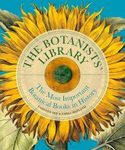About this book
Elizabeth Gwillim (1763-1807) and her sister Mary Symonds (1772-1854) produced over two hundred watercolours depicting birds, fish, flowers, people, and landscapes around Madras (now Chennai), India. The sisters' detailed letters fill four large volumes in the British Library; their artwork is in the Blacker Wood Natural History Collection of McGill University Library in Canada and in the South Asia Collection in Britain. The first book about their work and lives, Women, Environment, and Networks of Empire asks what these materials reveal about nature, society, and environment in early nineteenth-century South India.
Gwillim and Symonds left for India in 1801, following the appointment of Elizabeth's husband, Henry Gwillim, to the Supreme Court of Madras. Their paintings document, on one hand, the rapidly expanding colonial city of Madras and its population and, on the other, the natural environment and wildlife of the city. Gwillim's paintings of birds are remarkable for their detail, naturalism, and accuracy. In their studies of natural history, Gwillim and Symonds relied on the expertise of Indian bird-catchers, fishermen, physicians, artists, and translators, contributing to a unique intersection of European and Asian natural knowledge. The sisters' extensive correspondence demonstrates how women shaped networks of trade and scholarship through exchanges of plants, books, textiles, and foods.
In Women, Environment, and Networks of Empire an interdisciplinary group of scholars use the paintings and writings of Elizabeth Gwillim and Mary Symonds to explore natural history, the changing environment, colonialism, and women's lives at the turn of the nineteenth century.
Contents
Acknowledgments xi
Introduction / Anna Winterbottom 3
Part One: Painting, Collecting, and Observing
1. “Busy in Making Drawings of the Country”: The Madras and Environs Album / Ben Cartwright 27
Case Study 1: “I Have Had My Share of Amusement in Making Them”: Mary Symonds’s Pasteboard Models / Hana Nikčević 48
2. The Ornithology of Elizabeth, Lady Gwillim / Suryanarayana Subramanya 60
Case Study 2: “Curious for Fish”: Ichthyological Watercolours / Shyamal Lakshminarayanan and Hana Nikčević 97
3. Mosques, Gopurams, Varied Waters, and Stormy Seas: Built and Natural Environments of Early Nineteenth-Century Madras / Vikram Bhatt and Vinita Damodaran 111
4. Lady Gwillim’s Botany / Henry Noltie 134
Case Study 3: Indian Expertise on the Natural World in the Gwillim and Symonds Archives / Saraphina Masters 153
5. Artistic and Literary Contexts: Ornithology and Natural History Studies in India - The Mughal and Early British Periods / Marika Sardar and Abdul Jamil Urfi 159
Part Two: Social Lives, Social Networks, and Material Culture
6. Sir Henry Gwillim: Tender Husband, “Fiery Briton,” and Stalwart Judge / Arthur MacGregor 179
7. “My Things by the Ships Have All Come Safe”: Clothing and Textiles in the Gwillim Letters and Drawings / Toolika Gupta, Alexandra Kim, and Ann Wass 198
Case Study 4: Lady Gwillim’s China: A Case Study in Global Exchange / Victoria Dickenson 219
8. “There Are as Many Sorts of Mango as of Apples”: The Gwillim Archive and the Emergence of Anglo-Indian Cuisine / Nathalie Cooke 231
9. Elizabeth Gwillim: The Lady as Proto-ethnographer / Jeffrey Spear 248
Case Study 5: Of Mimesis and Mockery:The Letters of Elizabeth Gwillim and Mary Symonds / Minakshi Menon 268
10. Elizabeth Gwillim and Mary Symonds and the World of Women in Late Eighteenth- and Early Nineteenth-Century India / Rosemary Raza 276
Conclusion / Victoria Dickenson and Anna Winterbottom 295
Bibliography 309
Contributors 323
Index 327
Customer Reviews
Biography
Anna Winterbottom is a research associate at McGill University. Victoria Dickenson is a professor of practice at McGill University. Ben Cartwright is a writer and former curator at the South Asia Collection in Norwich, UK. Lauren Williams is the liaison librarian at the Blacker Wood Natural History Collection.



































